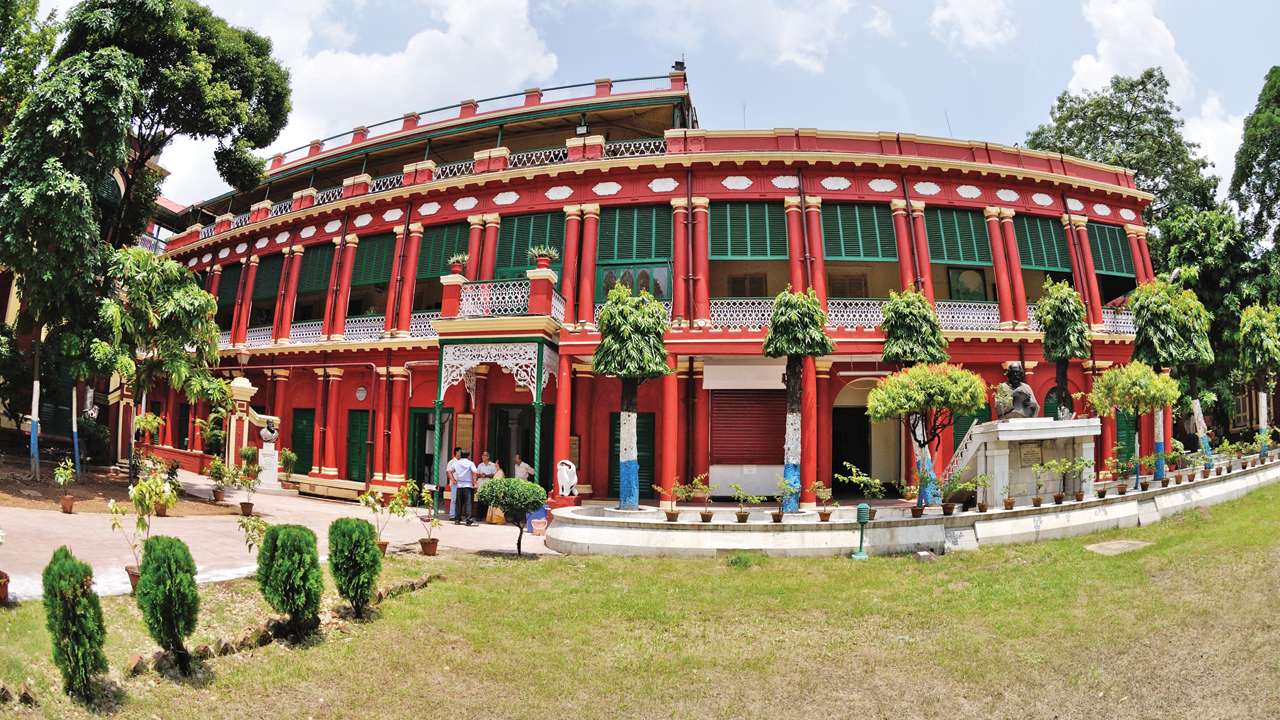
A guaranteed cure for insomnia. That’s what I thought the National School of Drama’s seminar in Kolkata would be, with a subject like “Time, Historicity and Memory”. However, when I reached the venue — the over 200 years old Jorasanko Thakurbari, Rabindranath Tagore’s ancestral home — all sleep vanished. I floated into a wakeful dream. Suddenly, past became present.
I grew up in a world of Tamil writers and musicians where Bengal’s Tagore was a living presence in memory and oral history. I had heard of how iconic Tamil poet Subramania Bharati stood at the Madras Central station (1919), twirling his impressive moustachio as he waited to see Tagore alight from the train. The crowds prevented him from getting near Gurudev, but no matter, Bharati bellowed out Gurudev’s poem (which he had translated) in a fine frenzy of nationalist pride. Another Bharati, named Suddhananda, also a nationalist poet, recorded his conversations with Tagore. My granduncle used to recite his translation of Tagore’s poems with palpable rapture.
Grandaunt sang Rabindrasangeet cast in a somewhat Carnatic mould but with devotion pure. The teachers in my school located in the Theosophical Society, Madras, had seen Tagore sitting under the banyan tree on campus (with his young disciples pressing his feet and disentangling knots from his mane) as he listened to Carnatic composer Muttuswami Dikshitar’s kritis, and came up with his own version of those songs. In my home, Tagore’s photograph was wedged between those of Gandhi and Nehru. I heard how, as a school boy, my grandfather Kalki Krishnamurti, managed to raise Rs 5, a princely sum then, for the privilege of listening to Tagore’s ticketed lecture in old Madras. Later he went to Shantiniketan, “where apsaras sing the venerable bard’s songs in his presence, under the moonlight.”
In 1947, as an eminent writer, Kalki took a gift of 100 Tamil books to Shantiniketan. Tagore was dead, but Kalki saw the poet “in every bush and tree; every creeper and flower; every teacher and student; every sculpture and painting. Tagore’s spiritual energy filled the air and purified it.”
I had dismissed all this as typical rhetoric. But walking through the Tagore museum in the sprawling Jorasanko mansion, I knew just what my grandfather meant. The historical space, with a recorded backscore of “apsaras singing” melancholic Rabindrasangeet, seduced me into a romantic haze.
A life-size portrait of young Rabindra as Valmiki looms before you. Theatre historian Ananda Lal, a fellow seminar participant tells me, “The play Valmiki Pratibha was staged right here in this courtyard, with women watching from the balconies. Bankimchandra Chatterjee, who came to the show, predicted that young Rabindra would turn into something special.”
The museum is small, compact, its exhibits tastefully arranged in chambers used by the family, creating a sense of intimacy. Photographs take you through the poet’s life. Political figures like Gandhi and Nehru are there, more excitingly, intellectuals and artists from Asia, Europe and the US. Lanterns and scrolls greet you in the Japanese and Chinese rooms, assembled with the spare elegance of their cultures. Tagore’s visits are recorded, but also how those visits inspired his cross-cultural vision.
Visuals are intercut with objects handcrafted by Tagore, first edition books, clippings, handwritten letters, scribbled verses. It moved me to read Tagore say that he learns of how Japanese women are honoured by their men, but that the women didn’t need this external ratification, they carried their honour in themselves.
Posters record Tagore’s last moments in life, and a random photograph in a corner shows him in his last days, face framed in bushy white, hands behind head, eyes betraying vulnerability, wonder and fear, quite unlike his general magisterial expression. What a contrast to the sanguine idealism of youth and the grandeur of the Nobel winner! You wonder: Is this the real man after all?
That inner soul bares itself through Tagore’s brush, in the few paintings on display (from the 2000 he produced in “volcanic eruptions” during the last 13 years of his life). They eclipse the works of the fellow greats in the gallery — Abanindranath Tagore, Nandalal Bose, Gaganendranath Tagore, Jamini Roy... They show nothing of the outside world, but their indefinable rasa seeps directly into the viewer’s soul, overwhelming you with an experience far beyond Tagore’s writings. You are left speechless.
The bubble bursts when you find a tiny room tucked into an obscure corner. “Mrinalini’s kitchen,” said the placard. A girl married at age ten to a stranger twelve years older, she bore five children before dying of an undiagnosed illness at 29. Tagore never remarried. Neither history nor memory can say much about the poet’s life partner, or how much (and if at all) she mattered to her husband.
The author is a playwright, theatre director, musician and journalist